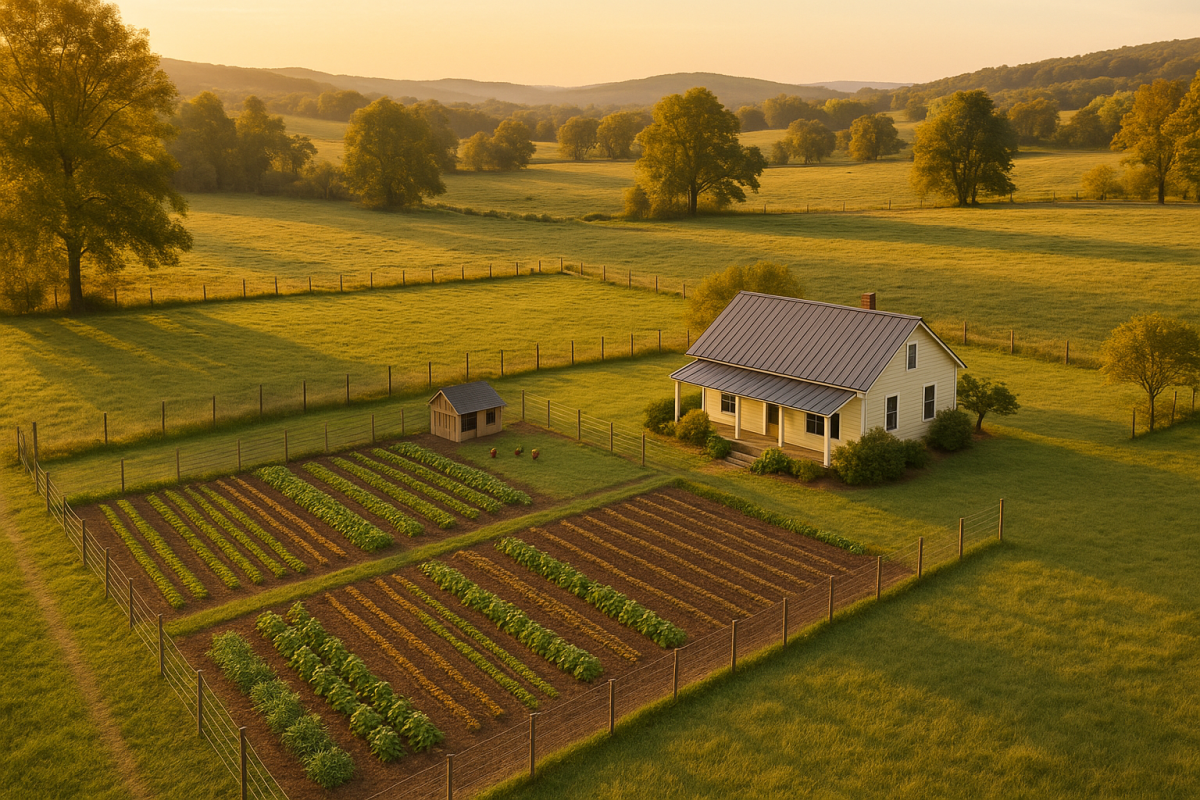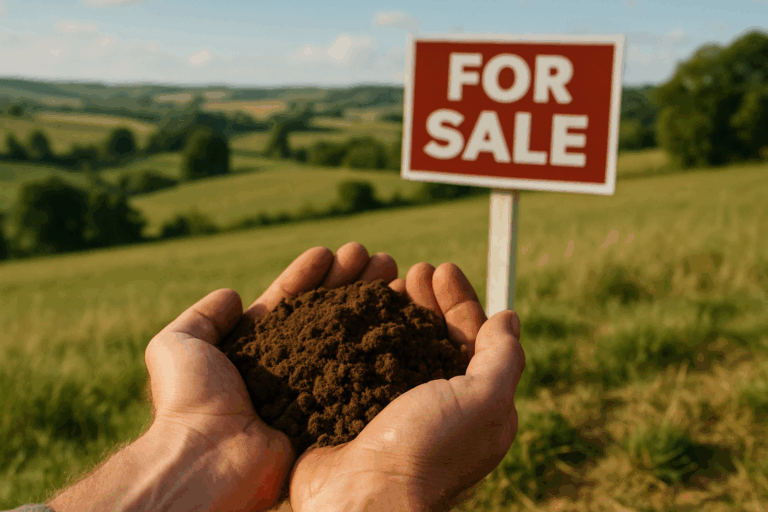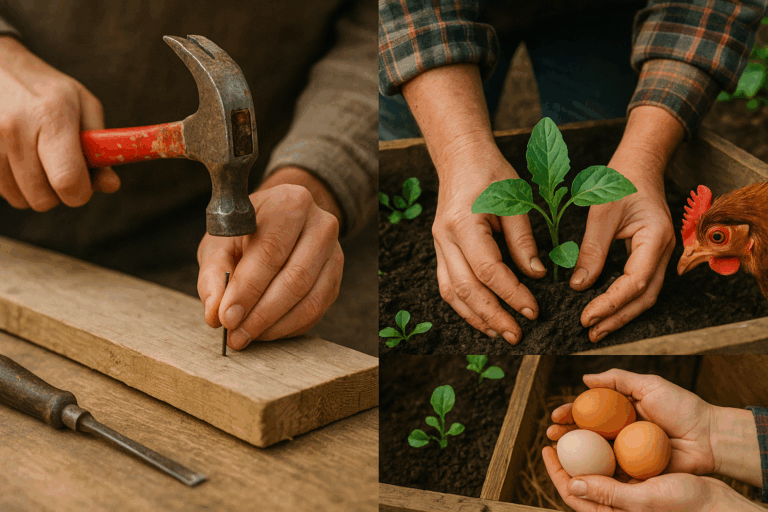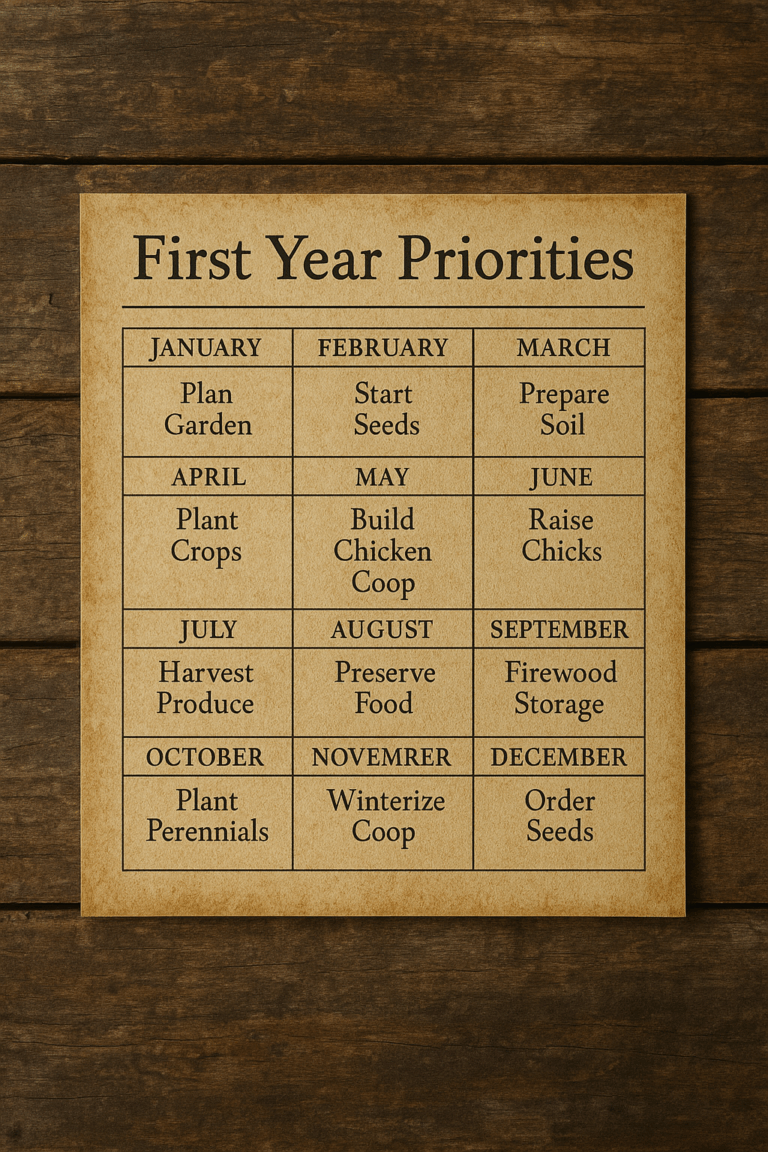
The dream of self-sufficient living has never been more appealing than it is today. In a world of rising food costs, supply chain uncertainties, and increasing disconnect from our food sources, more families are turning to homesteading as a path toward security, health, and purposeful living. But if you’re standing at the edge of this dream, wondering where to begin, you’re not alone.
I remember feeling overwhelmed when we first considered homesteading. The internet was full of beautiful Instagram photos of sprawling farms and perfectly organized pantries, making it seem like you needed acres of land and thousands of dollars to even start. That simply isn’t true. Some of the most successful homesteaders I know started with nothing more than a windowsill herb garden and a determination to learn.
The truth is, homesteading isn’t about perfection or having it all figured out from day one. It’s about taking small, intentional steps toward greater self-reliance while building skills that serve your family for generations. Whether you’re dreaming of a small suburban backyard transformation or planning a move to rural acreage, this guide will give you the realistic roadmap you need to begin your homesteading journey with confidence.
Modern homesteading is far different from the pioneer homesteading of the 1800s. Today’s homesteaders aren’t necessarily moving to remote wilderness areas or living completely off-grid (though some do). Instead, modern homesteading is about intentionally producing some of your own food, reducing dependence on industrial systems, and building skills that increase your family’s resilience and self-sufficiency.
At its core, homesteading is a mindset shift from being purely a consumer to becoming a producer. It’s about asking “Can I make this myself?” before reaching for your wallet. It’s about understanding where your food comes from, how to preserve it, and how to make the most of what you have. This philosophy can be applied whether you have a quarter-acre suburban lot or 40 acres in the country.
The difference between hobby farming and true homesteading lies in purpose and integration. A hobby farmer might keep chickens for the joy of it, while a homesteader keeps chickens as part of an integrated system that provides eggs, meat, pest control, and fertilizer for the garden. Every element on a homestead serves multiple purposes and connects to the larger goal of family self-sufficiency.
Modern homesteading exists on a spectrum. Urban homesteaders might focus on container gardening, food preservation, and making household products from scratch. Suburban homesteaders often add small livestock like chickens or rabbits, expand their gardens, and incorporate renewable energy systems. Rural homesteaders have the space for larger livestock, extensive gardens, and more comprehensive food production systems.
The beauty of modern homesteading is that you can start exactly where you are, with what you have, and grow into your vision over time. There’s no homesteading police checking to see if you have enough chickens or produce enough of your own food to qualify. Your homestead is whatever level of self-sufficiency works for your family, your space, and your goals.
Before you plant a single seed or buy your first chicken, you need to get crystal clear on what you want your homestead to accomplish. This isn’t just about daydreaming – it’s about creating a roadmap that will guide every decision you make over the coming years.
Start by asking yourself some fundamental questions: What does success look like for your family? Are you primarily motivated by food security, wanting to ensure access to healthy, chemical-free food? Is your goal financial – reducing grocery bills and potentially creating income streams? Are you drawn to homesteading for the lifestyle benefits – teaching children valuable skills, connecting with nature, or building family traditions?
Consider your family’s current situation honestly. How much time can you realistically dedicate to homesteading activities? If both parents work full-time jobs, your approach will be very different from a family where one parent is home during the day. What are your children’s ages and interests? Young children can be wonderful helpers but also require constant supervision, while teenagers might resist outdoor chores or embrace them wholeheartedly.
Financial reality deserves serious consideration. Homesteading can save money long-term, but it requires upfront investments in seeds, tools, equipment, and learning. How much can you comfortably invest in your first year without creating financial stress? Remember, homesteading should improve your life, not strain it.
Think about your timeline expectations. Many new homesteaders expect to see major changes within a few months, but meaningful homestead development typically takes 3-5 years. Are you prepared for this gradual timeline? Understanding this upfront prevents discouragement when your first tomato crop doesn’t eliminate grocery shopping.
Finally, consider your learning style and personality. Are you someone who likes to research extensively before taking action, or do you prefer to learn by doing? Do you enjoy detailed planning, or do you thrive on spontaneous experimentation? There’s no right answer, but knowing yourself helps you choose approaches that stick.
Write down your answers to these questions. This isn’t a one-time exercise – revisit and refine your goals annually as your family grows and changes. Having clear goals helps you prioritize projects, allocate resources wisely, and measure progress in meaningful ways.

One of the biggest misconceptions about homesteading is that you need substantial acreage to make it worthwhile. While more land certainly provides more opportunities, incredibly productive homesteads exist on spaces as small as one-quarter acre or even less.
Urban homesteading might seem like an oxymoron, but city dwellers can accomplish remarkable things with creative space utilization. Vertical gardening systems, container gardens, and intensive growing methods can produce surprising amounts of food. Urban homesteaders often focus on high-value crops like herbs, salad greens, and specialty vegetables that are expensive to buy but easy to grow. Even apartment dwellers can sprout seeds, grow microgreens, and maintain herb gardens on windowsills.
Suburban homesteaders typically have the most flexibility. A typical suburban lot provides space for significant vegetable gardens, fruit trees, composting systems, and often small livestock like chickens. Many suburban homesteaders find they can produce 30-50% of their family’s vegetables and herbs, along with fresh eggs, on a standard residential lot.
Rural homesteaders have space for larger gardens, orchards, pasture-raised livestock, and potentially cash crops. However, rural land often comes with challenges like poor soil, limited water access, or restrictive agricultural zoning that suburban and urban homesteaders don’t face.
Before choosing land, research local zoning laws and homeowner association rules carefully. Some areas prohibit livestock entirely, while others have restrictions on garden structures, chicken coops, or even clotheslines. Understanding these limitations upfront prevents costly mistakes and neighborhood conflicts.
Water access deserves special attention. Reliable, clean water is essential for both gardens and livestock. If you’re considering rural land, investigate well water quality and quantity. Municipal water works fine for most homesteading activities, but the cost can add up if you’re watering large gardens during dry spells.
Soil quality varies dramatically even within small areas. Heavy clay soil drains poorly but holds nutrients well. Sandy soil drains quickly but requires frequent watering and fertilization. Rocky soil presents cultivation challenges but often has good drainage. Most soil problems can be improved over time with organic matter and proper management, but starting with better soil saves years of work.
Climate considerations extend beyond just hardiness zones. Microclimates on your property can vary significantly – southern slopes are warmer and drier, northern slopes are cooler and more moist, low areas may frost earlier, and windy areas dry out quickly. Understanding these variations helps you place gardens, orchards, and livestock facilities optimally.
Whether you rent or own land affects your homesteading approach significantly. Renters often focus on portable systems like container gardens, moveable chicken coops, and soil improvement methods that benefit future tenants. Landowners can invest in permanent infrastructure like fruit trees, asparagus beds, and substantial outbuildings. Both situations offer homesteading opportunities, but require different strategies.

Successful homesteading builds on a foundation of basic skills that you’ll use repeatedly throughout your journey. Rather than trying to learn everything at once, focus on mastering these core competencies that support all other homesteading activities.
Basic gardening forms the cornerstone of most homesteading efforts. Start by learning to grow food in your current space, even if it’s just herbs on a windowsill. Understanding how plants grow, what they need to thrive, and how to troubleshoot problems serves you whether you’re growing tomatoes in containers or managing a large vegetable garden. Focus on soil health, watering techniques, and season extension methods before worrying about advanced topics like crop rotation or companion planting.
Food preservation skills become essential once you start producing more food than your family can eat fresh. Begin with simple methods like freezing and basic dehydration before advancing to pressure canning or fermentation. Understanding food safety principles prevents dangerous mistakes and builds confidence in your preserved foods. Many new homesteaders waste their first abundant harvests because they don’t yet know how to preserve them properly.
Basic animal care knowledge prepares you for adding livestock to your homestead. Even if you’re not ready for chickens yet, understanding animal behavior, nutrition basics, and simple veterinary care helps you make informed decisions about which animals suit your situation. Start by volunteering at local farms or visiting farmers’ markets to ask questions about animal management.
Simple repair and maintenance skills save enormous amounts of money and frustration on a homestead. Learning to use basic tools, understanding how mechanical systems work, and developing problem-solving approaches helps you maintain equipment, repair infrastructure, and tackle projects yourself. You don’t need to become an expert carpenter or mechanic, but being comfortable with basic repairs prevents small problems from becoming expensive emergencies.
Financial management skills specific to homesteading help you make wise investment decisions and track your progress accurately. Understanding the true costs of home food production, including time investments, helps you prioritize activities that provide the best returns. Learning to track expenses and yields shows which projects are financially worthwhile and which are primarily lifestyle choices.
Finding reliable learning resources and building connections with experienced homesteaders accelerates your skill development dramatically. Local extension offices often provide free or low-cost classes on gardening, food preservation, and animal care. Master Gardener programs offer intensive training and ongoing support. Online communities provide 24/7 access to advice and encouragement, while local homesteading groups offer hands-on learning opportunities and friendship.
Don’t underestimate the value of mentorship. Finding an experienced homesteader willing to share knowledge and provide guidance prevents countless mistakes and builds confidence much faster than learning entirely from books and videos. Offer to help with farm chores in exchange for learning opportunities – most homesteaders are generous with their knowledge and appreciate extra hands.

Your first year of homesteading should focus on building foundational systems and developing core skills rather than trying to do everything at once. Think of it as establishing the infrastructure for future growth rather than achieving complete self-sufficiency immediately.
Spring priorities center around soil development and garden establishment. Even if you’re not ready for a large garden, start composting kitchen scraps and building soil health wherever you plan to grow food eventually. Begin with a small garden bed or container system where you can practice basic growing skills without becoming overwhelmed. Focus on easy crops like lettuce, radishes, and herbs that provide quick results and build confidence.
Spring is also ideal for learning food preservation basics before harvest season arrives. Practice with store-bought produce to master techniques like freezing, dehydrating, and basic canning. This preparation prevents the overwhelming feeling of having abundant harvest but no idea how to preserve it.
Summer activities focus on expanding your growing efforts and beginning preservation activities. Succession plant lettuce and other quick crops to maintain continuous harvests. Begin preserving your first homegrown produce, even if it’s just herbs dried for winter use. Summer is excellent for establishing perennial plants like fruit trees, berry bushes, and asparagus that will provide food for decades.
Use summer to research and plan for livestock additions if that’s part of your long-term goals. Visit local farms, attend poultry shows, and connect with other livestock owners to learn about daily care requirements and potential challenges.
Fall represents the major harvest and preservation season for most homesteaders. Even first-year gardens often produce more than families can eat fresh, making this an intensive learning period for food preservation. Fall is also ideal for major soil improvement projects like adding compost or planting cover crops that will improve growing conditions for next year.
Begin planning next year’s garden while this year’s successes and failures are fresh in your memory. Order seed catalogs and start dreaming about expansions, but resist the temptation to plan something dramatically larger unless you’ve mastered your current system.
Winter provides essential planning and learning time that experienced homesteaders rely on heavily. Use shorter days and indoor time for skill development through books, online courses, and planning activities. Winter is perfect for learning new preservation techniques, planning garden layouts, and researching equipment purchases.
Many homesteaders use winter for indoor growing projects like sprouting, microgreens, or windowsill herbs that provide fresh food during the least productive season. These projects also maintain your connection to growing food year-round.
Throughout your first year, maintain detailed records of what you plant, when you plant it, how much you harvest, and what preservation methods you use. These records become invaluable for planning future years and avoiding repeated mistakes. Note which varieties perform well in your conditions and which disappoint. Track expenses so you understand the true costs of your homesteading activities.
Learning from others’ mistakes saves time, money, and frustration on your homesteading journey. These common pitfalls catch many enthusiastic beginners who dive in without adequate preparation.
The biggest mistake new homesteaders make is trying to do too much too quickly. The enthusiasm that draws people to homesteading can lead to ambitious first-year plans that become overwhelming. Planting a huge garden when you’ve never grown food before, buying multiple types of livestock simultaneously, or starting major construction projects all at once typically leads to poor results and burnout. Start small, master basic skills, then expand gradually.
Many beginners ignore local zoning laws and regulations, leading to expensive problems later. Research livestock restrictions, building permit requirements, and business licensing needs before investing in projects that might not be legal in your area. Some homesteaders have had to remove chicken coops, tear down buildings, or stop selling products because they didn’t understand local regulations.
Poor financial planning causes problems for many new homesteaders. Underestimating startup costs, failing to budget for ongoing expenses, or expecting immediate financial returns from homesteading activities can create financial stress that undermines the entire effort. Homesteading often requires several years of investment before generating significant savings or income.
Neglecting soil health sabotages gardening efforts regardless of how much time and money you invest in seeds, plants, and equipment. Healthy soil is the foundation of productive gardens, but building soil health takes time and ongoing attention. Many beginners focus on buying plants and tools while ignoring the soil these plants will grow in.
Isolation from community resources and other homesteaders limits learning opportunities and creates unnecessary struggles. Homesteading can feel lonely, especially when family and friends don’t understand your goals. Connecting with local homesteading communities, extension offices, and experienced mentors provides support, knowledge, and encouragement that makes the journey much more enjoyable and successful.
Homesteading might seem like an independent lifestyle, but successful homesteaders rely heavily on community connections for knowledge sharing, mutual support, and resource exchange. Building these relationships early in your journey provides immense benefits.
Local homesteading groups offer the most direct connection to others sharing similar goals and challenges. These groups often organize skill-sharing workshops, group purchases of supplies, and seasonal activities like canning parties or garden planning sessions. Many areas have informal networks that connect through social media or local bulletin boards.
Extension offices provide research-based information and often coordinate educational programs specifically for small-scale food producers. Master Gardener programs offer intensive training and ongoing support for gardening activities. Many extension offices also coordinate 4-H programs that welcome adult participants in agricultural projects.
Online communities provide 24/7 access to advice, encouragement, and inspiration from homesteaders worldwide. However, remember that online advice should be adapted to your specific climate, soil conditions, and local regulations. What works in Texas might not work in Minnesota.
Skill-sharing networks allow you to trade knowledge and labor with others who have complementary skills. You might help someone with garden planning in exchange for lessons in chicken care, or trade produce for equipment use. These relationships often develop into lasting friendships built around shared values and goals.
Starting a homestead in 2025 offers incredible opportunities for families seeking greater self-sufficiency, healthier food, and deeper connection to the land. The key to success lies in starting where you are, with what you have, and building skills gradually over time.
Remember that homesteading is a journey, not a destination. Every expert homesteader was once a beginner wondering where to start. The most important step is simply beginning, even if it’s just sprouting seeds on your kitchen counter or composting food scraps in a small bin.
Focus on learning and building systems rather than achieving immediate dramatic results. The skills you develop in your first year – whether it’s growing herbs, preserving food, or caring for chickens – form the foundation for everything you’ll accomplish in future years.
Connect with others who share your goals and values. The homesteading community is generous with knowledge and encouragement, and these relationships often become some of the most rewarding aspects of the lifestyle.
Start small, stay consistent, and trust the process. Your family’s journey toward greater self-reliance begins with a single step, and every step builds toward the life you’re dreaming of creating.
Ready to begin? Download our free Homestead Planning Checklist to organize your goals, assess your resources, and create your first-year action plan. This comprehensive guide will help you translate today’s inspiration into tomorrow’s reality.
What’s your biggest question about starting a homestead? Share in the comments below – our community loves helping new homesteaders get started on the right foot!
Download and print this checklist to organize your homesteading goals and create your action plan.
Homestead Planning Checklist
Download additional resources at Prairie Nest Homestead:
Visit prairienesthomestead.com for more free homesteading resources and community support.